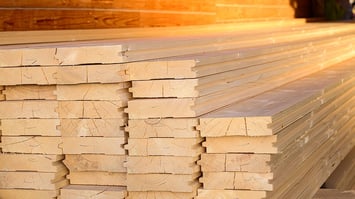After years of building taller with steel beams and concrete, a new concept is starting to catch on: Mass timber construction. Up until recently, typical wood-built structures would feature light-frame wood construction. In other words, your usual stick-built home.
These days, mass timber construction is becoming more relevant. Ready to see what’s behind this new trend? Below you can learn all about it—and even about tools and fasteners you can use with mass timber construction, like BECK’s LIGNOLOC® system.
What’s the Driving Force Behind Mass Timber Construction?
It’s all about sustainability and eco-friendliness. Today’s consumers and developers are more environmentally conscious than ever before. They want to include products with lower carbon footprints, and products that pump less pollution into the environment during production. Mass timber construction is catching on as the “green” alternative since it relies entirely on engineered products. Concrete, on the other hand, relies on cement mines, and steel production that can cause a lot of pollution.
What, Exactly, is Mass Timber Construction?
It’s a whole lot more than plain dimensional lumber. Mass timber construction relies on engineered products like specially designed beams or cross-laminated panels. Builders are starting to use it because whereas traditional stick-built structures have always been limited in size, mass timber construction can be built much taller.
Some of the more common mass timber products include:
- Post and beam systems, which feature upright wood members (the posts), and horizontal beams, all connected with mechanical steel fasteners. This type of construction was common in historic buildings, and it’s one that requires no load-bearing walls.
- Mass timber floor and wall systems, which are comprised of panels built using a honeycomb structure and a cross laminated timber design. These are incredibly sturdy panels, capable of handling both vertical and lateral loads easily. Mass timber floor and walls systems serve as a replacement to concrete and steel.
- Hybrid mass timber systems, refers to a combination of wood, concrete, steel, and other materials. Buildings constructed this way aren’t necessarily categorized as “mass timber” structures since there are other materials involved, but they do rely heavily on mass timber components.
Pros and Cons of Mass Timber Construction
There are a variety of advantages to consider:
- Mass timber construction is lighter, which saves on foundation work.
- These systems are typically quick and easy to construct on site.
- They’re more eco-friendly with a smaller carbon footprint than concrete and steel.
- They handle earthquakes well.
- Mass timber offers a unique aesthetic.
And what are the disadvantages? Here are a few:
- It can be more difficult to source materials since this is an up-and-coming trend.
- Mass timber—as of right now—can only be built up to around 18 stories.
- The structure needs to be kept dry to prevent rot and other issues.
- There is some debate about fire resistance. Some products may not perform well in a fire. Meanwhile, various manufacturers are working on fire-resistant mass timber products.
Building with Mass Timber Products? Use the BECK LIGNOLOC® System
If you’re looking for tool and fastener systems that are ideal for mass timber construction, the BECK LIGNOLOC® System is what you want. It’s a line that features nail guns specially designed to drive the LIGNOLOC® collated wooden fasteners. These fasteners are made from Central European beech wood from sustainable FSC forestry that can be driven into wood and wood-based materials without pre-drilling. It’s as easy to use as metal nails and nail guns, and they’re made to form an inseparable bond with timber.
.svg.png)

